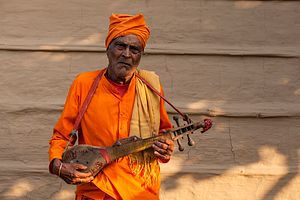Nikunj Bhowmick, who lives in a refugee settlement near the north Indian city of Bareilly, clings to two of his belongings, which connect him to his past. One is a certificate of registration, dated November 19, 1956, and issued by the superintendent of Ranigachi camp in the state of West Bengal. The other is a two-stringed musical instrument, called dotara, which he made for himself.
The instrument consoles his soul, and the certificate validates his existence in an adopted country. However, the piece of paper is also a constant reminder of scars that the new generation is hardly aware of.
A resident of Bhudiya Colony, around 55 miles from Bareilly city, Bhowmick is one of the millions of Bengali-speaking refugees from East Pakistan who crossed the border due to communal violence around the time of the partition of the erstwhile British India. East Pakistan came to be known as Bangladesh after its liberation from Pakistan in 1971 and is now home to the world’s fourth-largest Muslim population.
With his wife and three-year-old son, Bhowmick landed in West Bengal and stayed in the Ranigachi refugee camp for eight years before being rehabilitated in Bhudiya Colony. A Hindu, he escaped the atrocities that were meted out to numerous non-Muslims at the time, but he witnessed some bloody incidents. Like others, he remains traumatized by the memory.
“On the 16th of June, 1961, 160 families from camps in Calcutta were brought to Bhudiya Colony. They were from villages in Barisal, Faridpur, Mymensingh, Dhaka, and Jessore districts who came to India with a hope to start their lives afresh,” says another resident, Sukhranjan Bairagi.
Today, around 5,000 refugees from Bangladesh live in Bareilly. While only a few of the first-generation settlers are alive today, stories of arson, killing, rape, abduction, and looting still abound. However, the younger generation clearly does not wish to retain those stories in their memory. They talk more often, and more comfortably, about economic hardships and family disputes their ancestors had.
Here are some pictures from Bhudiya Colony.


















































